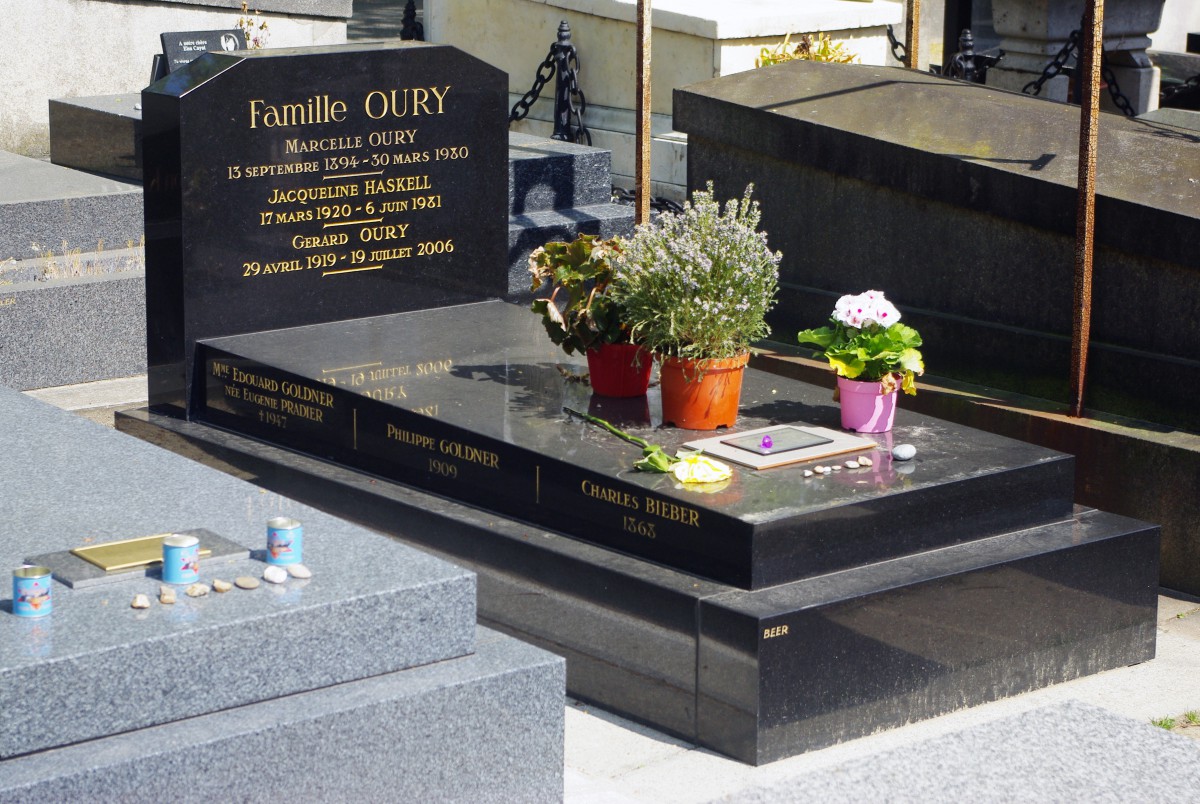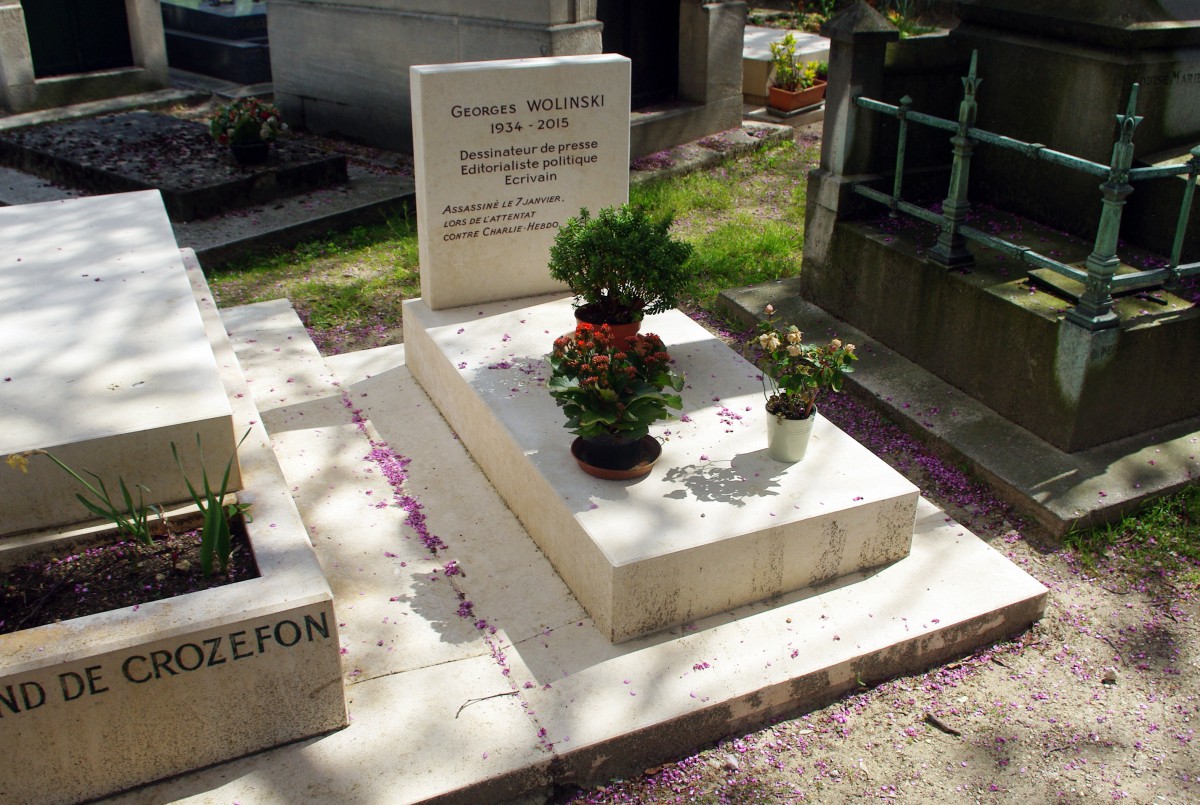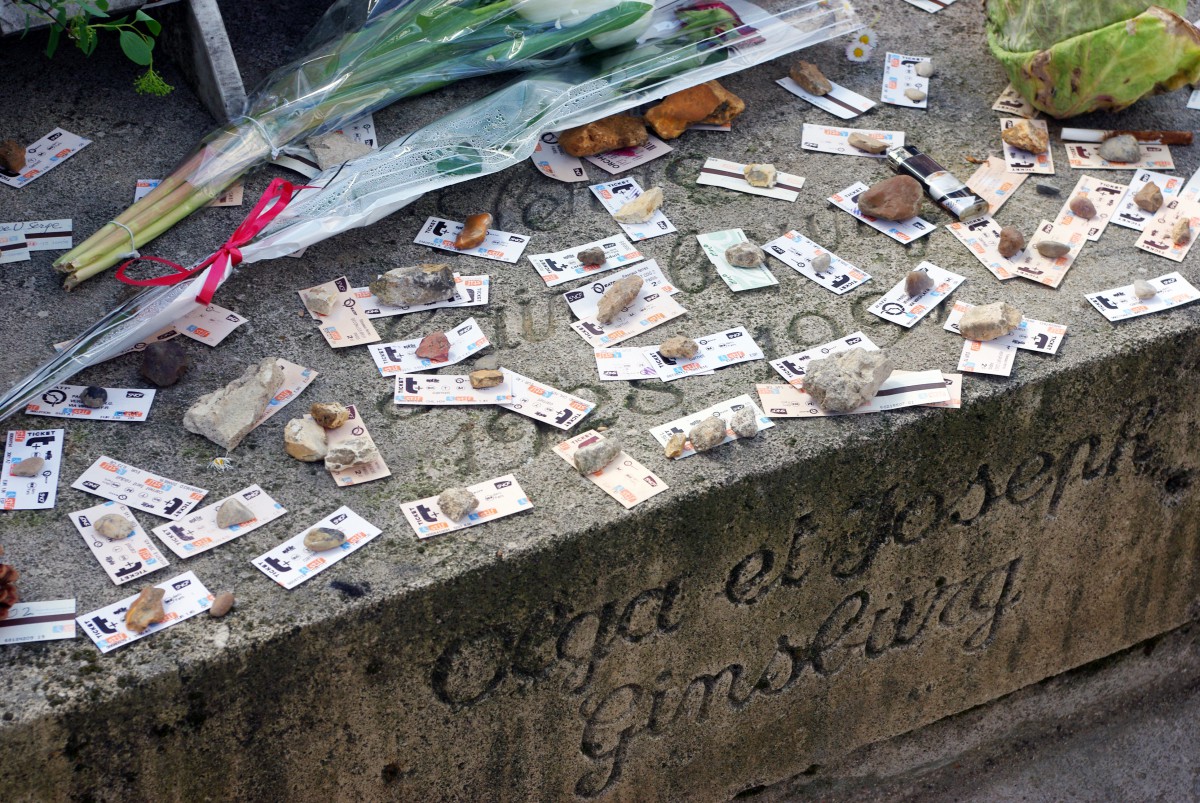The Montparnasse Cemetery in the 14th arrondissement of Paris is the second-largest operating cemetery of the French capital. The 45 acres landscaped funeral park is like an open-air museum as many graves have been listed as Historic Monuments. In the shadow of the Montparnasse Tower are the burial places of Jean-Paul Sartre, Simone de Beauvoir, Frédéric Auguste Bartholdi and Serge Gainsbourg.
Montparnasse cemetery: a bit of history

Imagine the district of Montparnasse without the cemetery and the hustle and bustle of the railway district. Back in the Middle Ages, the hill of Parnassus (Mont Parnasse) was situated outside the city limits. The site of the cemetery was used by market gardeners and occupied by three farms.
On your visit to the cemetery, notice the old windmill at the western corner. Dating from the 14th or 15th century, it has since lost its sails. The gristmill (Tour du Moulin or Moulin de la Charité) produced flour and is today one of the last surviving windmills in Paris (see the windmills of Montmartre).

In the 17th century, the land was used as a private burial place for the order of the Brothers Hospitallers of Saint John of God.
At the beginning of the 19th century, Nicolas Frochot, Prefect of Paris, bought the land for the City of Paris in order to create a large cemetery.
The Montparnasse cemetery was created in 1824 to serve the southern districts of the French capital. Known as the Cimetière du Midi, the cemetery was located outside Paris.
Since the 19th century, many artists and intellectuals have been buried there, including painter Soutine, sculptor Bartholdi, and writers Jean-Paul Sartre and Simone de Beauvoir who share the same grave. Of the more recent burials, the most visited is probably that of singer Serge Gainsbourg.
Description of the Montparnasse cemetery

The Montparnasse cemetery (Cimetière du Montparnasse) has an area of 18.72 hectares, making it the third largest garden of Paris (excluding the Bois de Vincennes and Bois de Boulogne). It stretches from the busy district of the Montparnasse railway station to the Place Denfert-Rochereau. It is divided into two parts by the rue Emile Blanchard: the smallest section is the Petit-Cimetière and the largest is called Grand-Cimetière.
The Montparnasse cemetery is one of Paris’ large cemeteries that have been laid out outside the precincts of the old town: Montmartre Cemetery in the north, Père Lachaise in the east, and Montparnasse Cemetery in the south. Another smaller cemetery was opened in Passy near the Trocadéro.
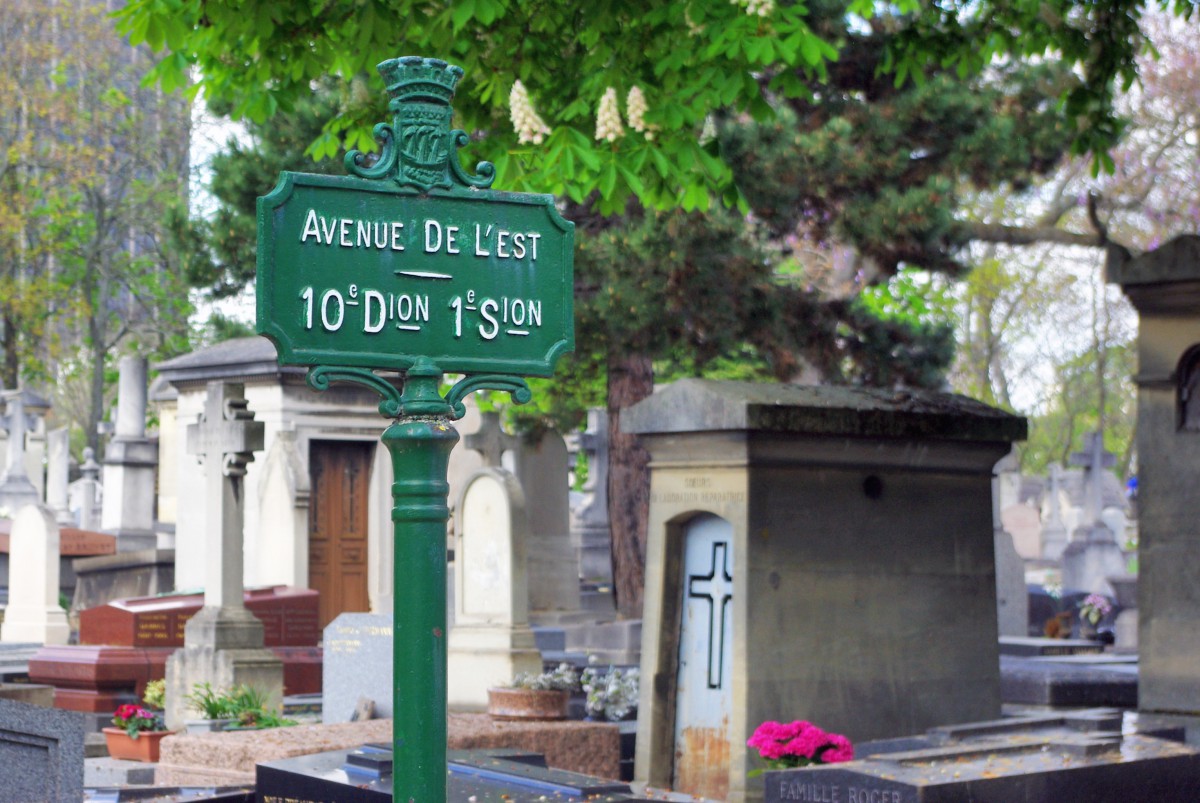
More than 300,000 people are buried in the cemetery over 42,000 plots. The cemetery is divided into sections (called divisions).
Some are simple tombstones, others are monumental graves and family mausoleums. There is a great range of funerary art styles: Egyptian, Classical, Gothic, Renaissance, Art Nouveau… More than 1,200 trees contribute to a certain romantic atmosphere (lime trees, pagoda trees, maples, ashes and conifers.)
It is very difficult to be buried at the Montparnasse cemetery which has strict rules about burials: only people who died in Paris or who had lived there may be buried there.
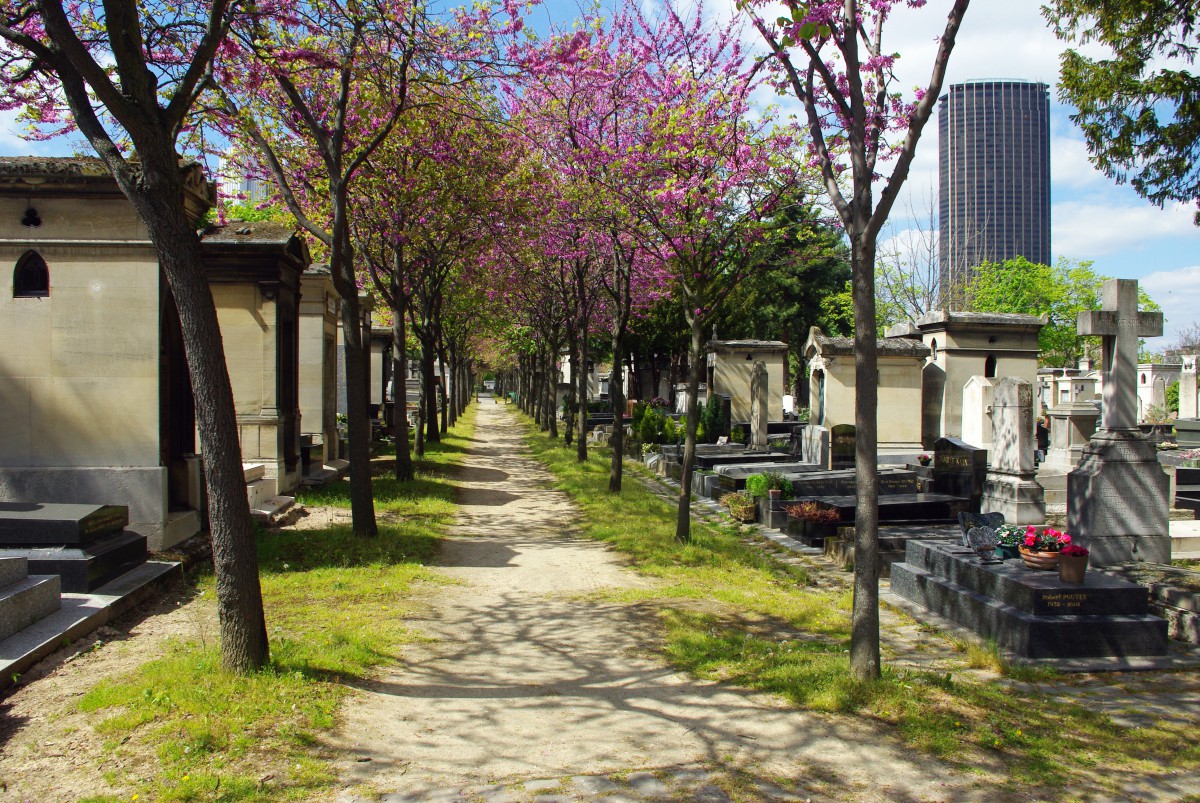
Download the English version of the cemetery map with the most-searched-for burial places.
Some of the most-searched-for burial places

Many famous people (writers, composers, musicians, singers, poets, politicians, and scientists are buried at the Montparnasse cemetery. Among the celebrities who chose Montparnasse cemetery as their last resting place are:
- Théophile Bader (1864-1942), founder of the Galeries Lafayette, a native from Dambach-la-Ville
- Auguste Bartholdi (1834-1904), sculptor of the Statue of Liberty, a native of Colmar
- Charles Baudelaire (1821-1867), French poet
- Simone de Beauvoir (1908-1986), French writer and philosopher. Buried with Jean-Paul Sartre
- Samuel Beckett (1906-1989), Irish writer, was awarded the 1969 Nobel Prize in Literature
- André Citroën (1878-1935), French industrialist, founder of Citroën
- Alfred Dreyfus (1859-1935), a French officer. Was at the centre of one of the tensest political dramas in modern French history
- Serge Gainsbourg (1928-1991), French singer and composer
- Charles Garnier (1825-1898), French architect famous for the Palais Garnier
- Louis Hachette (1800-1864),
- Guy de Maupassant (1850-1893), French writer
- Gérard Oury (1919-2006), French film director (La Grande Vadrouille starring Louis de Funès and Bourvil)
- Jean-Paul Sartre (1905-1980), French writer and philosopher
- Georges Wolinski (1934-2015), French cartoonist and comics writer. Killed on 7 January 2015 in a terrorist attack in the Charlie Hebdo newspaper offices
Montparnasse cemetery: Practical info
To make the most of your visit download the map of the cemetery to save valuable time.

The main entrance is at 3 boulevard Edgar Quinet. Other smaller entrances are situated on rue Émile Richard (near the junction of boulevard Raspail and boulevard Edgar Quinet), rue Froidevaux (near place Denfert-Rochereau) and at 89 avenue du Maine. Entrance is free.
Closest métro stations: Raspail (lines 4 and 6), Edgar Quinet (line 6), Denfert-Rochereau (lines 4 and 6, RER B) or Gaîté (line 13).
Opening times:
From 6th November to 15th March:
Monday to Friday: 8am to 5.30pm – Saturday: 8.30am to 5.30pm
Sundays and bank holidays: 9am to 5.30pm
From 16th March to 5th November:
Monday to Friday: 8am to 6pm – Saturday: 8.30am to 6pm
Sundays and bank holidays: 9 am to 6 pm
There are no more admissions to the cemetery 15 min before closing time.
Inside the cemetery, do respect the dead, their families and others visitors by observing silence and behaving decently.
Did you like what you read? If so, please do share this article on Facebook, Twitter or Pinterest!







